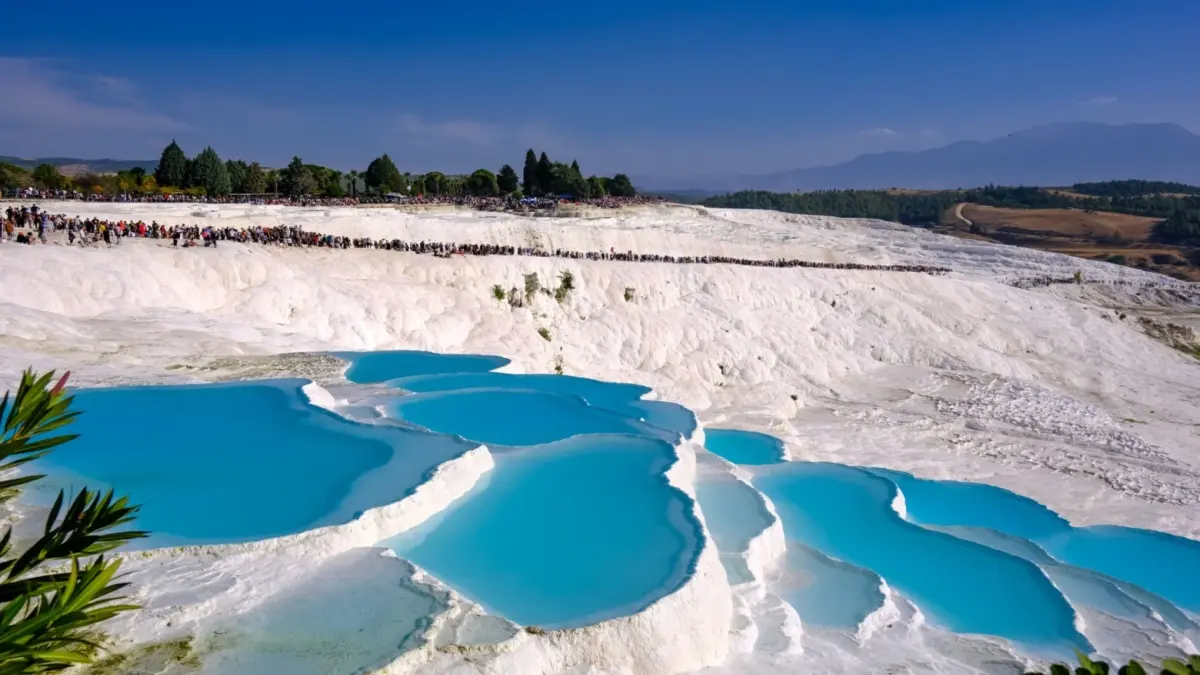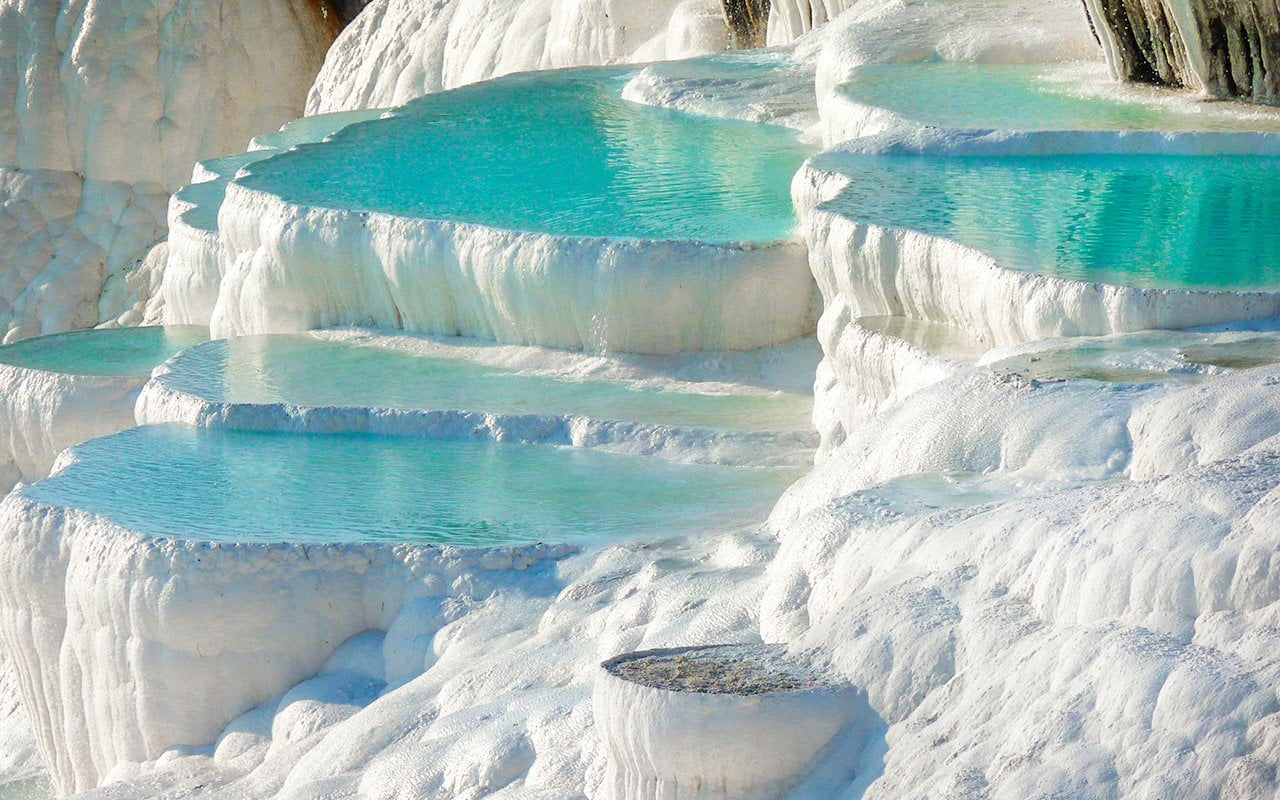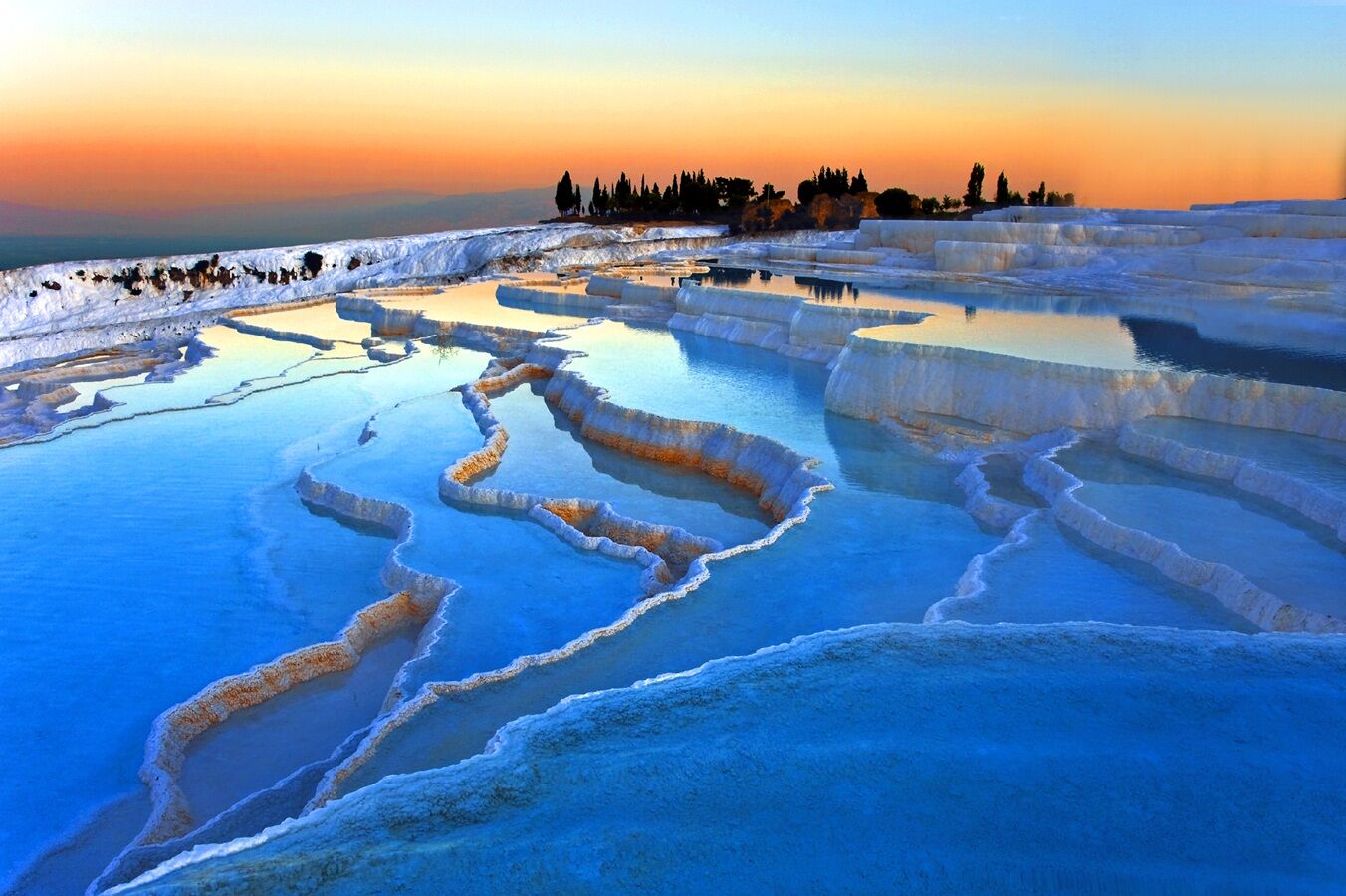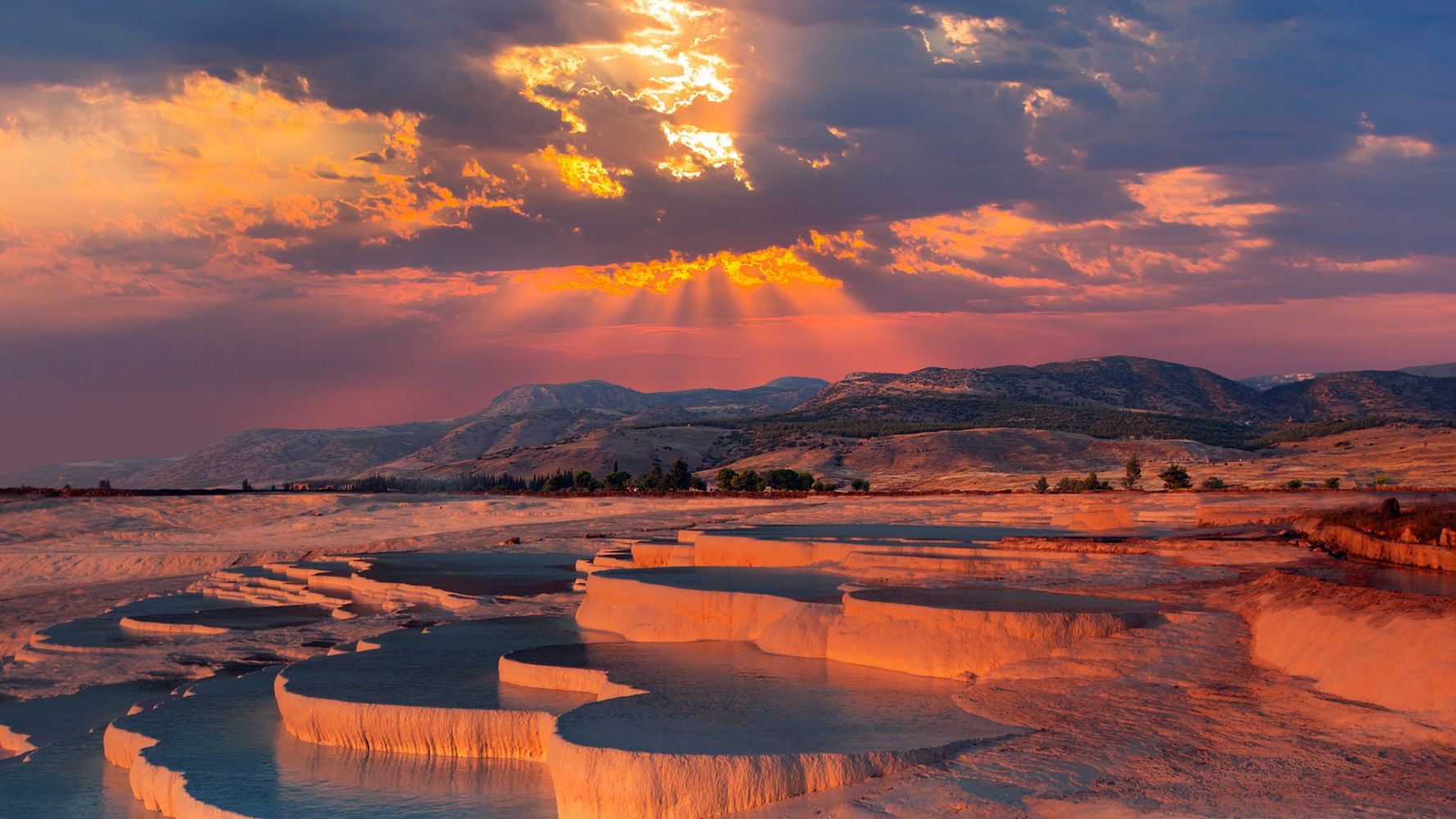Have you ever imagined walking on a castle made of cotton? Or perhaps strolling across the clouds? Well, that's precisely the feeling Pamukkale in Denizli promises: surreal, magical, and absolutely unforgettable. These snow-white terraces, formed over thousands of years by calcium-rich thermal waters bubbling up from the earth, aren't on the UNESCO World Heritage List for nothing. So, when you visit this unique landscape, what should be at the very top of your list of things to do in the Pamukkale Travertines? The answer is simple and incredibly enjoyable: leave your shoes and slippers behind and just soak in the moment!
Take off your shoes and walk on the snow-white travertines where thermal waters flow
The moment you step into Pamukkale, you'll be met with the first instruction from the staff: Please take off your shoes. This isn't a suggestion; it's a requirement. But don't see it as a hassle—on the contrary, it's the greatest gift you're given! These snow-white travertines are so delicate that walking on them with shoes could cause serious damage to this natural beauty. This rule exists both to protect the millennia-old formations and to allow you to experience this wonder of nature in its purest form.

The moment you take your shoes in hand (bringing a small bag for them will make things much easier) and take your first step, you enter a magical world. The thermal water, at a pleasant 35-36°C, flows over your feet, instantly washing away your fatigue. The ground beneath you is neither hard marble nor a slippery surface. The soft calcite deposits you feel under your feet are like a natural therapy session. Some spots are a bit rough, while others are filled with tiny pools. As you walk slowly through this cotton field, taking your time, you'll not only marvel at the power of nature but also feel completely cleansed of the stress of city life.
Take unique photos in the iconic White Paradise
While you're experiencing this unique sensation under your feet, your hand will inevitably reach for your phone or camera. Because this place is, in the truest sense of the word, a White Paradise, and every corner offers a postcard-perfect view. It's almost impossible to take a bad photo in Pamukkale, but with a few tips, you can capture shots that will make your social media feed pop.

If you want calm, mystical photos away from the crowds, be here in the early morning. The soft light as the sun's first rays hit the white travertines will add a fairytale-like atmosphere to your photos. In the afternoon, the brightness of the sun makes the white even more dazzling. The terrace pools filled with turquoise water create a stunning contrast with the white texture. Don't just focus on the travertines; use the majestic ruins of the Hierapolis Ancient City right next to you as a backdrop to add historical depth to your photos.
Watch the color change reflected on the travertines at sunset
The most poetic way to end your day in Pamukkale is undoubtedly by watching the sunset. The pure white that dazzles the eyes all day long gives way to a riot of color as the sun slowly descends on the horizon. Experiencing this moment is a ritual that takes the Pamukkale experience to its peak, and thousands of visitors climb to the top just for this moment.

As the last rays of the sun hit the travertines, the white terraces first turn golden yellow, then pink and orange. The surface of the water-filled pools reflects this color change in the sky like a mirror, creating a scene too beautiful to describe with words. Find yourself a nice spot on the upper terraces, sit down, and just watch. This moment is not just a natural phenomenon but a display of the perfect harmony between thousands of years of history and nature. Don't forget to put your camera down for a moment and just breathe in the tranquility of the moment.
While You're Here, See These Places Too
Your adventure in Pamukkale doesn't have to end with the travertines! This region is so rich that there's much more to explore. Don't leave without visiting the Hierapolis Ancient City, which spreads out just above the travertines and is at least as impressive. With its massive theater, the mysterious Gate of Hell, and the largest necropolis (ancient cemetery) in Anatolia, it will take you on a journey through time. If you have time, the Laodicea Ancient City, just a 15-20 minute drive away, is another must-see. Home to one of the seven churches mentioned in the Bible, this ancient city has been virtually brought back to life with recent restoration work.
Frequently Asked Questions (FAQ)
Question: Can you enter the Pamukkale travertines with shoes?Answer: No, it is strictly forbidden. To protect the delicate limestone structure of the travertines, all visitors are required to walk barefoot in the designated areas. The staff are very strict about this. Don't forget to bring a bag to carry your shoes!
Question: What is the best time to visit Pamukkale?Answer: The ideal times are during the spring (April-May) and autumn (September-October) when the weather is not oppressively hot. If you plan to go in the summer, you should prefer the very early morning (around 08:00) or late afternoon (after 16:00) to avoid the crowds and extreme heat that can reach 40°C.
Question: Is the Museum Pass (Müzekart) valid in Pamukkale?Answer: Yes, the Museum Pass is valid for entry to the Pamukkale Travertines and the Hierapolis archaeological site, allowing for free admission. However, if you want to swim in the famous Cleopatra's Pool among ancient columns, you will need to pay a separate fee, as this pool is operated by a private entity and does not accept the Museum Pass.
Reference: For more in-depth information on the natural and cultural significance of this area, you can visit the official UNESCO World Heritage site page for Hierapolis-Pamukkale: (https://whc.unesco.org/en/list/485/)


 English
English Türkçe
Türkçe